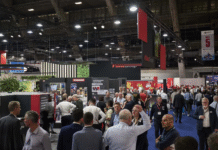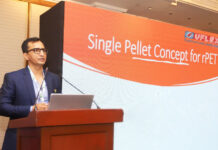Manroland Sheetfed planned to launch three new presses at drupa. Since drupa didn’t happen this year and got postponed to next year, the company has brought them to market anyway. In the process of adding two variations in the 700 size, its successful Roland 700 Evolution press has now become the Roland 700 Evolution Elite.
The company claims 700 Evolution Elite is the world’s most technologically advanced sheetfed offset press, which is available in 16,000 and 18,000 sheets an hour configurations. The technologies that differentiate the re-badged 700 Evolution Elite include its new feeder head and cylinder geometry. The new cylinder geometry enables the press to run at the rated speeds even when configured with interdeck and end-of-press UV curing.
The new presses
New to the series are two 700 Evolution model variations. The first of these is the 700 Evolution Speed, rated to run at 20,000 sheets an hour. The Evolution Speed model includes the appropriate automation features and curing options needed for the highest configuration presses. Moreover, like all the manroland presses, it is designed to be run at the full rated speed even when configured with UV curing on substrates of suitable quality.
The second new model is the Roland 700 Evolution Light, which runs at 15,000 sheets an hour and dispenses with automatic plate loading and blanket washing. The entry-level press, which only has manual plate loading, is not available with UV curing from the factory. The 700 Evolution Light is seen as a long run carton printing machine and competitively priced for emerging markets.
The newest manroland sheetfed press to join the family is the Roland 900 Evolution, which marks the company’s re-emergence in the large format platform category it once dominated. Now, based on the Evolution platform, this machine will be available at a speed of 16,000 sheets an hour in three large-format sizes – 135 cm, 142 cm, and 162 cm.











